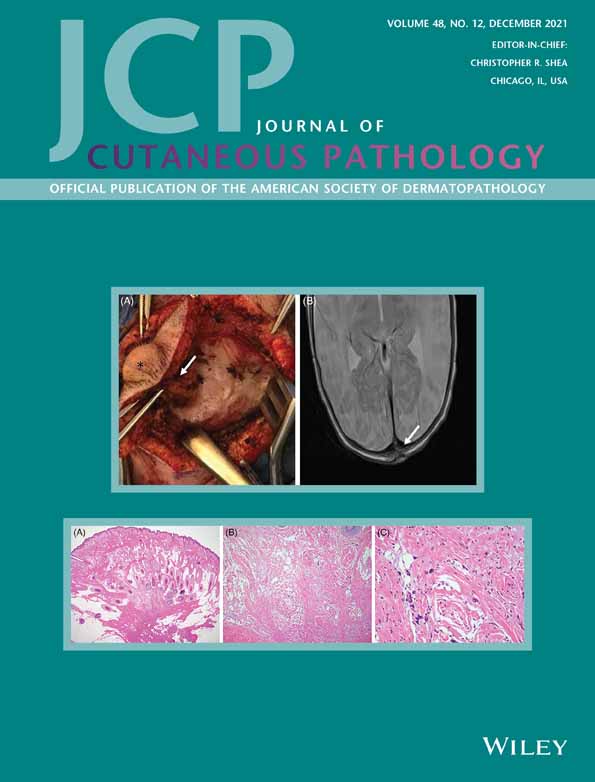Histopathologic and immunophenotypic features of cutaneous solid organ transplant-associated graft-vs-host disease: Comparison with acute hematopoietic cell transplant-associated graft-vs-host disease and cutaneous drug eruption
Funding information: Washington University in St. Louis
Abstract
Background
Although it is relatively common after hematopoietic cell transplant (HCT), graft-vs-host disease (GVHD) is a rare complication following solid organ transplantation (SOT).
Methods
This study evaluated skin biopsy specimens from five cases of SOT GVHD, 15 cases of HCT GVHD, and 15 cases of cutaneous drug eruption. Immunohistochemical staining for CD3, CD4, CD8, T-bet, and GATA-3 was performed to examine the density and immune phenotype of skin-infiltrating lymphocytes.
Results
Similar to HCT GVHD, the predominant histopathologic findings in skin biopsy specimens of SOT GVHD were widespread vacuolar interface dermatitis with scattered necrotic keratinocytes. However, the density of dermal inflammation was considerably higher in SOT GVHD. Features that were more predictive of a cutaneous drug eruption over GVHD included spongiosis, confluent parakeratosis, and many eosinophils. Involvement of the hair follicle epithelium was seen in all three disorders. Both forms of cutaneous GVHD showed a predominance of Th1 (CD3+/T-bet+) lymphocytes within the inflammatory infiltrates. This shift was more pronounced in SOT GVHD, particularly among intraepidermal T-cells.
Conclusions
SOT GVHD shares many histopathologic features with HCT GVHD. However, SOT GVHD has a greater tendency to develop brisk lichenoid inflammation.
Open Research
DATA AVAILABILITY STATEMENT
The data that support the findings of this study are available from the corresponding author upon reasonable request.




